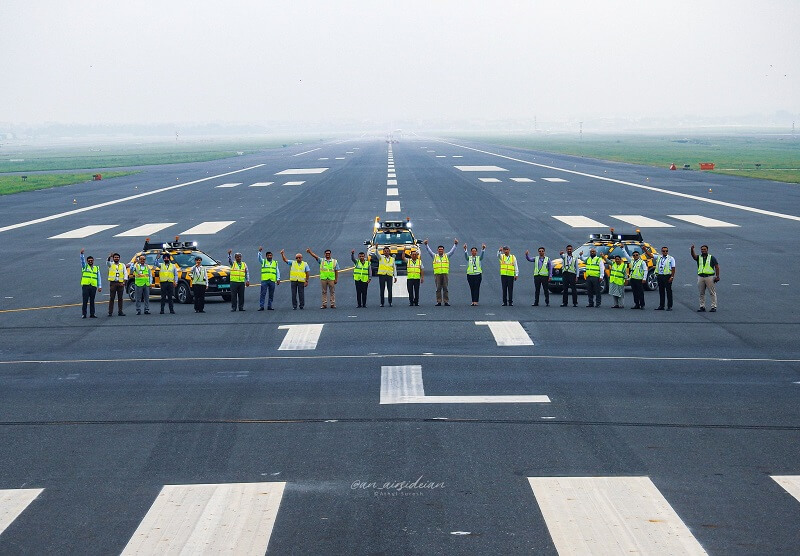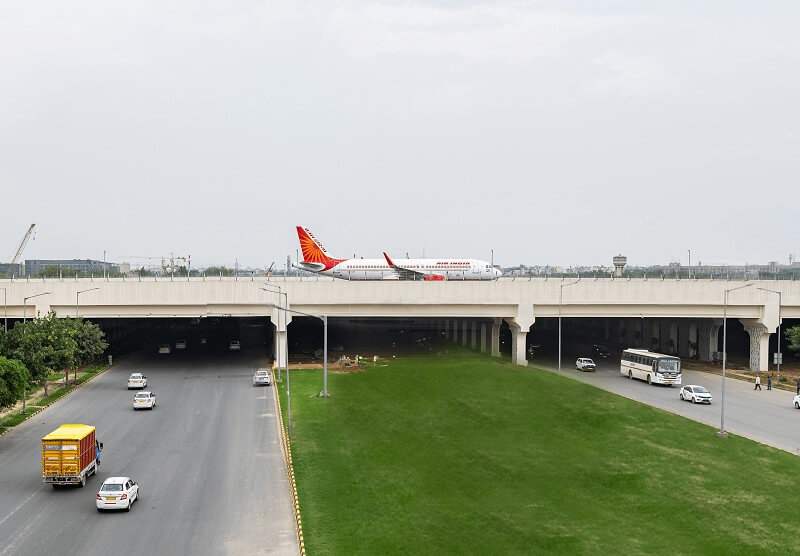
In a momentous event, Delhi Airport added another milestone in its journey of becoming a net zero carbon emission airport by 2030 by inaugurating the fourth runway and the Eastern Cross Taxiway (ECT). While the 4.4-kilometre-long runway will enhance the operational efficiency at DIAL, the ECT will help lessen aircraft emissions.
Here is what you need to know about this historic event!
On 17th July, the Honourable Minister for Civil Aviation, Shri Jyotiraditya Scindia, unveiled the much-awaited 4th runway and elevated dual eastern cross taxiway at Delhi Airport. The inauguration marks a significant milestone in the Phase 3A expansion project of DIAL, the busiest airport in India.
While the runway would handle the increased traffic movement, the dual elevated cross taxiway will help reduce carbon emissions significantly. This is a crucial step as it would take Delhi Airport closer towards its goal of becoming a Net Zero Carbon Emission Airport by 2030.
With the commencement of the 4th runway, Delhi Airport becomes India’s only airport with four operational runways. Its physical construction was successfully completed in September 2021, despite the numerous challenges, including those posed by the Covid-19 pandemic.
The 4.4km-long runway, parallel to the third runway (11/29) on the Southern side, is an integral part of the Phase 3A expansion project undertaken by the DIAL to make the facility future-ready.

Its construction was carried out in a phased manner, considering the presence of a live taxiway. It ensured minimal disruption to the airport's operations while facilitating the expansion.
Besides the runway, the Delhi Airport also inaugurated the ECT on 17th July. First-of-its-kind dual elevated taxiway, the ECT connects the Northern and Southern airfields on the eastern side of the airport.

It will reduce the taxiing time for the aircraft, improve airport operational efficiency, save natural resources such as ATF, and enhance the flyer experience. Additionally, the ECT at Delhi Airport will help reduce about 55,000 tonnes of CO2 emission, which is equivalent to planting about 15 lakh trees.
During these developments, the boundary wall and drainage system were realigned to optimise functionality and enhance overall efficiency. Additionally, recognising the importance of safety, a temporary fire station catering to the third runway was constructed.
To further prioritise safety, an isolation bay was developed on the southern side to address any emergency situations that may arise. This state-of-the-art facility underscores our commitment to ensuring the well-being of all airport users and stakeholders.
As part of DIAL’s commitment to sustainability and energy efficiency, the traditional halogen runway lights have been replaced with state-of-the-art LED lights. This upgrade enhances visibility and safety and reduces energy consumption, contributing to DIAL’s environmental goals.
In his address during the inauguration ceremony, Minister Shri Jyotiraditya Scindia expressed his satisfaction with the completion of this vital expansion project. He highlighted the importance of modernising and upgrading infrastructure to meet the growing demands of air travel, contributing to the development of the aviation sector and the nation's economy. Terming the Elevated Eastern Cross Taxiways (ECT) as a marvel, he said:
“Today, we are integrating the elevated Eastern Cross Taxiways (ECT), the first of its kind in India. For our travellers, this means a reduction in taxi time. The second innovation we see is the 4th runway. This runway makes Delhi Airport the only airport in the country to have four runways. With this comes responsibility. With ECT, we will save 55,000 tonnes of Carbon emissions annually. We are for growth, we are for cresting new horizons but in a sustainable way, keeping with the Prime Minister's impetus to achieve Zero Carbon Emissions by 2070.”
Delhi Airport is committed to providing world-class aviation infrastructure and services to its passengers while prioritising sustainable development. The recent accomplishments by Delhi Airport, the inauguration of the fourth runway and the eastern cross taxiway, will contribute to the cause by reducing CO2 emissions and enhancing the flying experience for passengers.